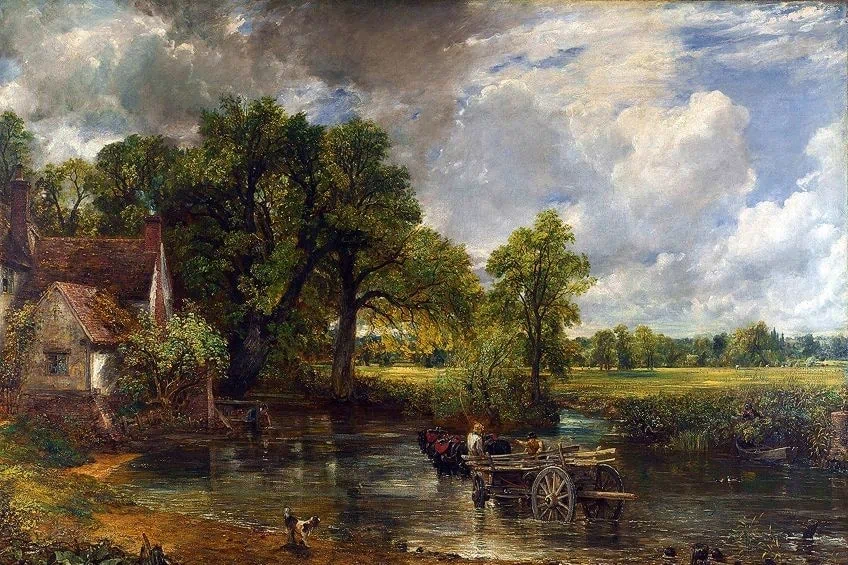Famous Landscape Paintings and Artists – Top Painted Landscapes
Today, landscape paintings make up some of the most well-loved paintings in art history. However, this was not always the case. In the past, landscapes were considered the inferior subject matter to historical, mythological, and biblical paintings. In this article, we will explore some of the most famous landscape paintings and the artists that helped change the perception of landscape painting forever.
Contents
- 1 A Brief History of Landscape Painting
- 2 15 of the Most Famous Landscape Paintings of All Time
- 2.1 Hunters in the Snow (1565) by Pieter Bruegel the Elder
- 2.2 View of Toledo (c. 1596 – 1600) by El Greco
- 2.3 Le Printemps (c. 1660 – 1664) by Nicolas Poussin
- 2.4 Wanderer Above the Sea of Fog (1818) by Caspar David Friedrich
- 2.5 The Hay Wain (1821) by John Constable
- 2.6 Fuji, Mountains in Clear Weather (Red Fuji) (c. 1830 – 1832) by Katsushika Hokusai
- 2.7 The Fighting Temeraire (1839) by J. M. W. Turner
- 2.8 Impression, Sunrise (1872) by Claude Monet
- 2.9 The Starry Night (1889) by Vincent van Gogh
- 2.10 Hyde Park, London (1890) by Camille Pissarro
- 2.11 Le Mur Rose (1898) by Henri Matisse
- 2.12 Mont Sainte-Victoire (c. 1904 – 1906) by Paul Cézanne
- 2.13 The Dream (1910) by Henri Rousseau
- 2.14 Landscape with Two Poplars (1912) by Wassily Kandinsky
- 2.15 Agrigente (1954) by Nicolas de Staël
- 3 Frequently Asked Questions
A Brief History of Landscape Painting
Some of the earliest examples of landscape paintings can be found in archeological sites in Turkey and Greece. Primitive frescos dating back to 1500 BCE decorate the walls of homes and various other buildings. Other famous archeological sites such as that of Pompeii contain similar frescos, although these date back to 1 BCE. This shows us that humans have always had a desire to fill their living spaces with beautiful vistas.
Ancient civilizations of the East display similar artistic interests. During the Song Dynasty (which spanned between 960 and 1276) shan shui was incredibly popular.
These were traditional Chinese ink paintings, which featured fictional and nonfictional landscapes. Majestic mountain ranges and waterfalls were common in shan shui paintings. It is worth noting that paintings of nature remained highly regarded in Asia throughout history. However, landscapes were thought of as mere backgrounds in Western art for a very long time.
During the Middle Ages in Europe, landscapes were nonexistent except for drolleries (images that decorated the margins of important texts). It was more common for nature to be depicted in the style of millefleur (backgrounds made up of floral patterns), rather than as a landscape. However, nearing the end of the 14th century, artists such as Gerard David began producing painted landscapes on a small scale.

The 15th century was the peak of the Renaissance period. During this time, legendary artists such as Leonardo da Vinci, Raphael, and Donatello created masterpieces, often displaying themes from Antiquity. They created highly realistic artworks through novel techniques such as perspective and proportion. Although landscapes were not common during this time, these techniques, which were mastered during the Renaissance, helped later artists produce realistic landscape paintings.
In the late 16th century, the great Protestant iconoclasm took place in the Low Countries. This meant that the artists from these countries could no longer paint religious imagery. To fill the gap in subject matter as well as patronage, many of these artists focused on portraiture.
However, some artists, including the celebrated Pieter Bruegel the Elder, began creating some of the most famous landscape paintings in history. Bruegel’s works were also unique in that they often focused on local rural landscapes rather than majestic panoramas.
These would become increasingly popular in the 17th century. In the 17th century, during the Dutch Golden Age, landscape painting caught on in the Netherlands. Numerous artists from this area, including the iconic Rembrandt, began producing highly realistic landscape paintings. Whilst countries such as Italy and France were still focused on historical and Classical paintings, artists began putting more detail into their background landscapes.
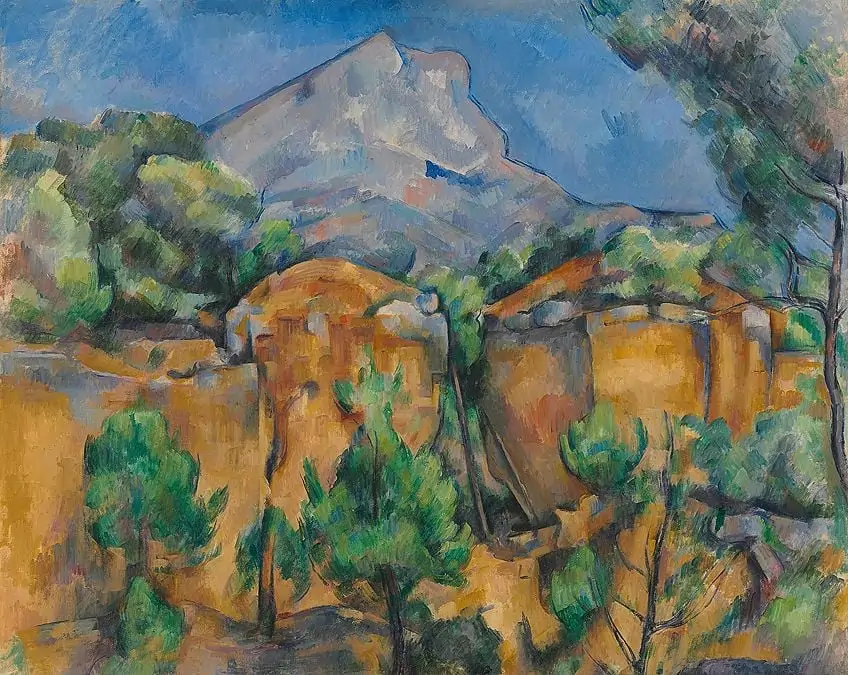
By the 18th century, the art world was dominated by Romanticism. It was during this art movement that landscapes began to gain widespread popularity and respect. Beautiful paintings of foreign landscapes were highly sought after as people became more and more intrigued by travel. Nature was no longer depicted as gentle and serene, but rather as a sublime force that could enact disaster on humankind. Artists such as John Constable, J. M. W Turner, and Caspar David Friedrich were some of the most prominent landscape artists of the Romantic era.
During the late 19th century, Impressionism materialized and become one of the most famous movements in art history. Nature played a vital role in the Impressionist movement. Many landscape painters left their studios behind and set up their easels outside to create their art en Plein air. They were fascinated by the way various seasons resulted in landscapes with different colors and light.
By the 1940s, landscape painting had become the respected art form we know today. However, after World War II many people were overflowing with feelings that needed to be released in a healthy and creative way.
Thus, the Abstract Expressionism movement was born. Abstract Expressionism was about painting what one felt rather than what one saw. People could develop strong emotional connections to landscapes that remind them of their past. As a result, landscape painting became an integral part of the Abstract Expressionism movement.
Renowned artists such as Jackson Pollock created many famous landscape paintings during this period. In the current day, there is no prevalent art movement that dictates how or what artists should paint. Instead, they are allowed to draw from the art of the past or to even create something new and unique. As a result, contemporary landscape artists create artworks that range from photorealistic to completely abstract, inspired by a variety of eras and cultures from around the world.
15 of the Most Famous Landscape Paintings of All Time
The art of landscape painting has ebbed and flowed throughout the history of art. Below is a list of famous landscape paintings, which helped the art form to become what it is today. We start our journey in the 16th century, just as landscape painting was beginning, and make our way to the contemporary landscapes of the mid-20th century.
Hunters in the Snow (1565) by Pieter Bruegel the Elder
| Artist | Pieter Bruegel the Elder (c. 1525 – 1569) |
| Date Painted | 1565 |
| Medium | Oil on wood |
| Dimensions (cm) | 162 x 117 |
| Where It Is Currently Housed | Kunsthistorisches, Vienna, Austria |
| What It Is Worth | Not available |
Pieter Bruegel the Elder was born sometime between 1525 and 1530. He died in 1569 of an unknown illness when he was only around 38 years old. This was considered a tragedy as he was highly regarded for his paintings of rural life as well as the famous landscape prints he produced for Hieronymus Bosch.
Hunters in the Snow (1565) shows that mankind is completely powerless when it comes to nature.
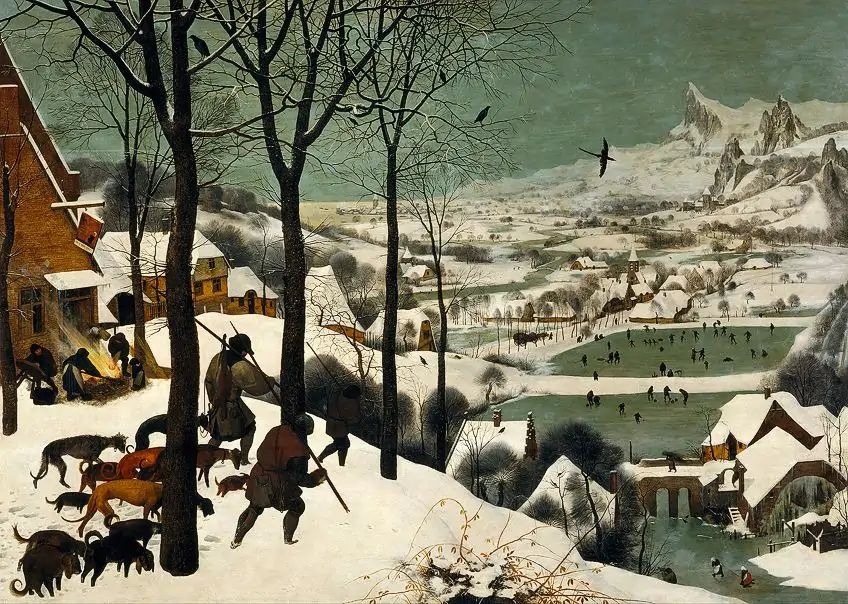
Thus, we must adapt to the challenges it throws our way to survive. Bruegel perfectly illustrates the harsh European winter through his color palette of white, gray-green, and black. The hunters are in stark contrast to the landscape, which alludes that they are two opposing forces. They form a diagonal line, which is a common compositional element of Bruegel’s paintings.
It is believed that Hunters in the Snow was commissioned by an affluent banker as part of a series depicting the Labors of the Months.
It is unsure whether the series was originally made up of 12 paintings (one for each month of the year) or six, as there are only five still in existence now. In modernity, Bruegel is considered to be one of the most famous landscape artists in history thanks to the contributions he made to the genre.
View of Toledo (c. 1596 – 1600) by El Greco
| Artist | El Greco (1541 – 1614) |
| Date Painted | c. 1596 – 1600 |
| Medium | Oil on canvas |
| Dimensions (cm) | 48 x 43 |
| Where It Is Currently Housed | Metropolitan Museum of Art, New York, the United States |
| What It Is Worth | Not available |
El Greco was the nickname given to the Cretan artist Domếnikos Theotokópoulos, who lived between 1541 and 1614. He was called El Greco (meaning “the Greek”) because he spent the majority of his life working in Italy and Spain. He incorporated artistic characteristics from each of these countries in his artwork, along with traditionally Byzantine elements. His works would go on to inspire artists from later generations, particularly the Cubists.
View of Toldeo (c. 1596 – 1600) is one of El Greco’s only landscape paintings to have stood the test of time.

It is believed that he painted it as an ode to the city of Toledo, where he lived for almost 40 years. His reverence for the city is shown by the way he uses the hills as a platform, placing them as high up as possible without them being in the heavens. The unique sky in the painting is one of the aspects that has made it one of the most famous landscapes in history.
Many art historians have also credited View of Toledo as being one of the first pure landscape paintings in the history of Spanish art.
Le Printemps (c. 1660 – 1664) by Nicolas Poussin
| Artist | Nicolas Poussin (1594 – 1665) |
| Date Painted | c. 1660 – 1664 |
| Medium | Oil on canvas |
| Dimensions (cm) | 160 x 117 |
| Where It Is Currently Housed | Louvre, Paris, France |
| What It Is Worth | Estimated $23 – 31 million |
Nicolas Poussin was born in 1594 in Normandy, France, and died in 1665 in Rome, Italy where he had spent the majority of his life. He is one of the most celebrated French artists of the Baroque period. Although he was best known for his Classical and religious-themed paintings a few of these showcased the landscape as the focal point rather than the figures.
Le Printemps (c.1660 – 1664), which translates to “the spring” in English, was one of these.
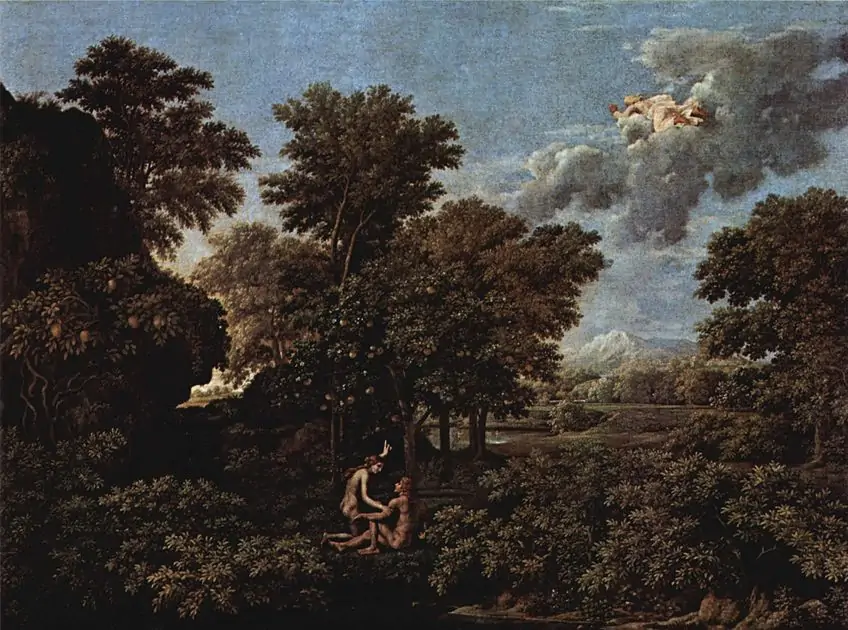
It is one of the four paintings which make up his Cycle of Four Seasons (1660-1664) series. Although landscapes were uncommon during this time, the painting is still characteristic of the Baroque era. This is evident through the high contrast between the sky and the foliage as well as its dramatic and emotive portrayal of Eve reaching for the forbidden fruit.
Wanderer Above the Sea of Fog (1818) by Caspar David Friedrich
| Artist | Caspar David Friedrich (1774 – 1840) |
| Date Painted | 1818 |
| Medium | Oil on canvas |
| Dimensions (cm) | 95 x 75 |
| Where It Is Currently Housed | Hamburger Kunsthalle, Hamburg, Germany |
| What It Is Worth | Estimated $586 498 – 820 838 |
Caspar David Friedrich was a German artist whose life spanned between 1774 and 1840. He is one of the most famous landscape painters of the Romantic period. During the Romantic era, creatives aimed to reconnect with nature in a world in which urbanization was happening at the rate of knots. Thus, landscapes slowly began to gain popularity amongst the general public.
It was typical for Friedrich to compose his paintings with a figure overlooking a landscape.
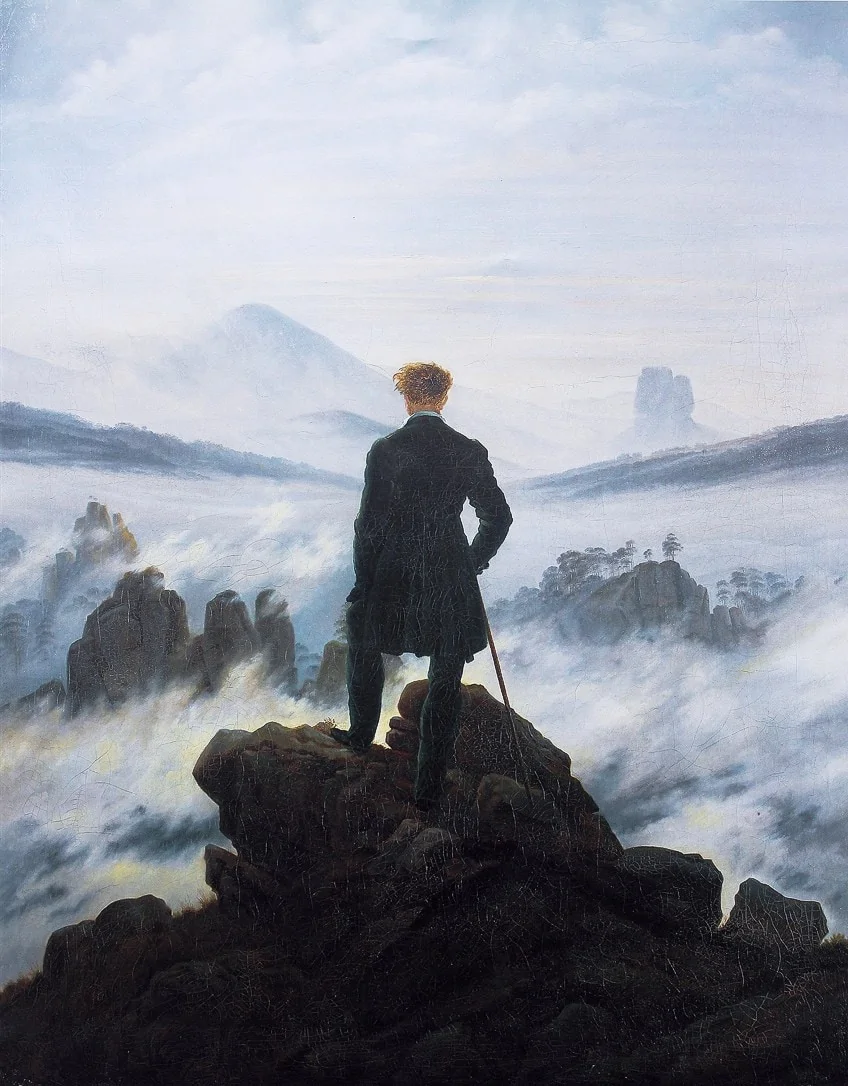
This can be seen in paintings such as Woman before the Rising Sun (c. 1818 – 1820), Moonrise by the Sea (c. 1822), and Wanderer Above the Sea of Fog (1818), of course. His trademark feature became so popular that this figure became known as a Rückenfigur and was utilized by many later artists.
Even the famous Norwegian painter, Edvard Munch, used a Rückenfigur in The Lonely Ones (1899), which was clearly inspired by Friedrich’s work.
The Hay Wain (1821) by John Constable
| Artist | John Constable (1776 – 1837) |
| Date Painted | 1821 |
| Medium | Oil on canvas |
| Dimensions (cm) | 185 x 130 |
| Where It Is Currently Housed | National Gallery, London, England |
| What It Is Worth | Estimated $26 359 984 |
John Constable was born in 1776 in Suffolk, England. He predominantly painted landscapes from his home county and the surrounding areas. Due to the numerous artworks he created in this area, this picturesque countryside has come to be known as “Constable Country”. The Hay Wain (1821) tells the story of a rapidly changing world in which many people had to leave their country homes to seek work in crowded cities.
Life in the cities was full of suffering due to long working hours, poor living conditions, and rampant disease.

Therefore, many longed for the rural life they were forced to leave behind. This longing is clear in The Hay Wain, which idolizes life in the countryside. During his lifetime, Constable was not praised for his artworks and often struggled to sell enough to survive. However, he is now thought of as one of the most famous landscape artists in British history.
The Hay Wain in particular is a favorite amongst the British public and thousands of tourists from all over the world come to visit it each year.
Fuji, Mountains in Clear Weather (Red Fuji) (c. 1830 – 1832) by Katsushika Hokusai
| Artist | Katsushika Hokusai (1760 – 1849) |
| Date Painted | c. 1830 – 1832 |
| Medium | Woodcut |
| Dimensions (cm) | 37 x 25 |
| Where It Is Currently Housed | Private collection |
| What It Is Worth | $507 000 |
Katsushika Hokusai was born in 1760 in Japan, during what is known as the Edo period. The Edo period was a very prosperous time in Japanese history. This meant that local art was flourishing, especially as they had instated a policy of isolation and thus could not be influenced by art from other countries.
Therefore, artists such as Hokusai turned to their surroundings for inspiration.
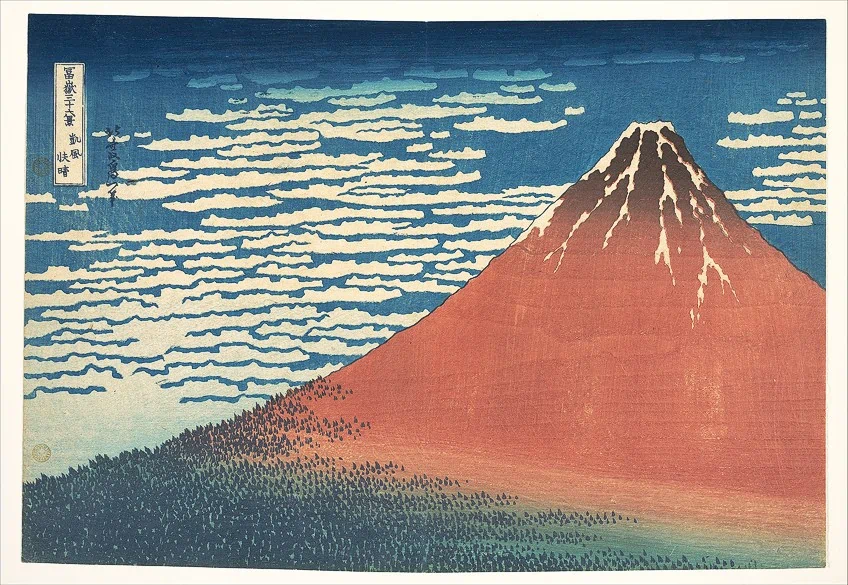
Fuji, Mountains in Clear Weather (c. 1830 – 1832) is one of the paintings which make up Hokusai’s Thirty-Six Views of Mount Fuji series. Some believe that Hokusai’s fascination with Mount Fuji was entirely due to its raw beauty. Others, however, believe that it might have had something to do with the Japanese folk law which named Mount Fuji as the location for the fountain of youth. After Japan came out of its isolation in the late 1800s, Hokusai’s work began to make its way around Europe.
Artists were awestruck at his immense talent and the originality of his artworks. Amongst his fans were Claude Monet, Gustav Klimt, and Vincent van Gogh, who were all avid collectors of his works.
The Fighting Temeraire (1839) by J. M. W. Turner
| Artist | J. M. W. Turner (1775 – 1851) |
| Date Painted | 1839 |
| Medium | Oil on canvas |
| Dimensions (cm) | 122 x 91 |
| Where It Is Currently Housed | The National Gallery, London, England |
| What It Is Worth | Not available |
M. W. Turner (referred to simply as William Turner during his lifetime) was born in 1775 in England. After a long and tumultuous art career, he died in 1851. Turner was known to be a difficult person, however, his talent as a landscape artist was undeniable.
His naval seascapes were of particular notoriety and continue to be praised in the current day.

The Fighting Temeraire (1839) is likely the most famous landscape painting in British history. It showcases Turner’s incredible gift for painting light and color, as well as his unique ability to infuse his paintings with deep emotion. Although on the surface we see an old battleship being broken up into parts, the painting tells a much deeper story, that of the old being replaced with the new, as is evident by the contrast between the sailed ship and the steamboat. Turner was a hugely influential figure in the Romantic era. Today, he is considered a British national treasure.
This sentiment is expressed through the appearance of The Fighting Temeraire (as well as a portrait of him) on the polymer £20 note, which was issued in 2020.
Impression, Sunrise (1872) by Claude Monet
| Artist | Claude Monet (1840 – 1926) |
| Date Painted | 1872 |
| Medium | Oil on canvas |
| Dimensions (cm) | 63 x 48 |
| Where It Is Currently Housed | Musée Marmotten Monet, Paris, France |
| What It Is Worth | Estimated $250 to 350 million |
Claude Monet was born in Paris in 1840. However, when he was just five years old, they moved to Le Havre, Normandy, which is where he spent a large portion of his life. Later in life, he moved to Giverny and curated a garden of epic proportions, which would become the subject of many of his paintings.
It was here that he painted his famous Water Lilies series before his death in 1926.

Impression, Sunrise (1872) is a highly influential artwork as it is what earned the Impressionists their name. After a scathing critique from artist Louis Leroy in which he referred to this emotive and unpolished style as “Impressionism” the name stuck.
Impressionism is now one of the most well-loved art styles in history.
The Starry Night (1889) by Vincent van Gogh
| Artist | Vincent van Gogh (1853 – 1890) |
| Date Painted | 1889 |
| Medium | Oil on canvas |
| Dimensions (cm) | 92 x 74 |
| Where It Is Currently Housed | The Museum of Modern Art, New York City, the United States |
| What It Is Worth | Estimated $1 billion |
Vincent van Gogh was a Dutch artist who lived between 1853 and 1890. He is known not only for his great artistic talent but unfortunately also for the mental health issues he struggled with. The very definition of a tortured artist, van Gogh eventually took his own life.
The Starry Night (1889) was actually inspired by the night sky van Gogh saw from his bedroom window during his stay in the Saint-Paul-de-Mausole asylum.

Vincent van Gogh was one of the first artists to explore nighttime landscapes. Although The Starry Night is now one of the most famous paintings in art history, van Gogh considered it to be a personal failure as he found it too abstract.
Hyde Park, London (1890) by Camille Pissarro
| Artist | Camille Pissarro (1830 – 1903) |
| Date Painted | 1890 |
| Medium | Tempera on canvas |
| Dimensions (cm) | 65 x 54 |
| Where It Is Currently Housed | Tokyo Fuji Art Museum, Tokyo, Japan |
| What It Is Worth | Not available |
Camille Pissarro was born on the island of St Thomas, in the Danish West Indies in 1830. His parents were of French nationality and thus he was sent to France to be educated. As an adult, he moved to France permanently to pursue an art career. There, he met many like-minded artists such as Paul Cézanne and Pierre-Auguste Renoir.
Being much older than his Impressionist peers, he earned the nickname The Father of Impressionism.
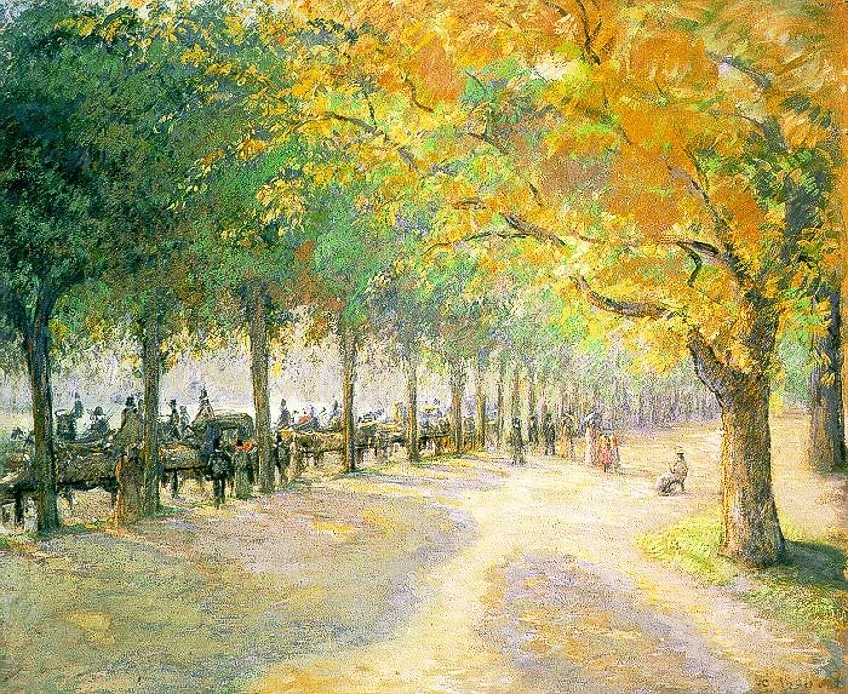
Hyde Park, London (1890) is one of the many famous landscapes inspired by Pissarro’s stay in England. At the outbreak of the Franco-Prussian War in 1870, Pissarro and his family fled to England to escape the conflict in France.
Hyde Park, London was painted almost 20 years after Pissarro returned to France but was inspired by the scenes he saw during his time in the UK.
Le Mur Rose (1898) by Henri Matisse
| Artist | Henri Matisse (1869 – 1954) |
| Date Painted | 1898 |
| Medium | Oil on canvas |
| Dimensions (cm) | 46 x 38 |
| Where It Is Currently Housed | The Center Pompidou, Paris, France |
| What It Is Worth | Estimated $204 932 |
Henri Matisse was a French artist who lived between 1869 and 1954. He is often called the Father of Fauvism thanks to the role he played in the creation of the movement. His painting Woman with a Hat (1905) is one of the most famous paintings of the Fauvist movement.
Although Matisse was not known for his landscapes, Le Mur Rose (1898) is infused with his signature bold use of color. In recent years, the painting has caused a sensation due to its disturbing past.
The painting belonged to a man named Harry Fuld Jnr., who was a German Jew. He had packed it up to be delivered to him after he fled Nazi Germany. However, it was intercepted by a Nazi soldier named Kurt Gerstein. In 1945, the painting was recovered and Gertstein reportedly hung himself shortly after.
The money made from selling the painting has recently been donated to an Israeli medical charity.
Mont Sainte-Victoire (c. 1904 – 1906) by Paul Cézanne
| Artist | Paul Cézanne (1839 – 1906) |
| Date Painted | c. 1904 – 1906 |
| Medium | Oil on canvas |
| Dimensions (cm) | 92 x 73 |
| Where It Is Currently Housed | Musée d’Orsay, Paris, France |
| What It Is Worth | $100 million |
Paul Cézanne was a French landscape artist who was born in 1839 and died in 1906. Cézanne surrounded himself with all the budding Impressionists of his time. However, he was often moody and antisocial, which made him a difficult character to work with.
Famous artist Camille Pissarro was able to look past his quirks, however, and mentored him for many years.
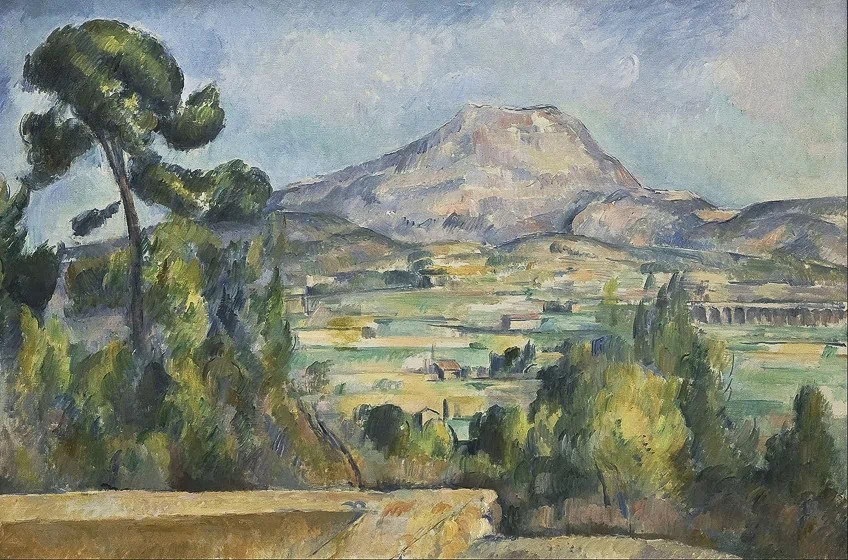
Although Cézanne was considered to be an Impressionist, there were key differences in his objectives from most artists of the movement. Whilst most Impressionists were focused on portraying light, Cézanne’s primary concern was depth. This is clear in Mont Sainte-Victoire (c. 1904 – 1906), which was a view he saw every day from his home in Aix-en-Provence.
This same view inspired many of his landscape paintings.
The Dream (1910) by Henri Rousseau
| Artist | Henri Rousseau (1844 – 1910) |
| Date Painted | 1910 |
| Medium | Oil on canvas |
| Dimensions (cm) | 298 x 204 |
| Where It Is Currently Housed | The Museum of Modern Art, New York City, the United States |
| What It Is Worth | Estimated $2 882 500 |
Henri Rousseau was a French artist born in 1844. He started his art career very late in life, only really getting into painting when he was in his 40s. His art style was inspired by Primitivism and often showcased exotic jungle scenes. He died in 1910 due to a complication after receiving surgery for his leg, which had become gangrenous.
The Dream (1910) was the last painting Rousseau created before his death.
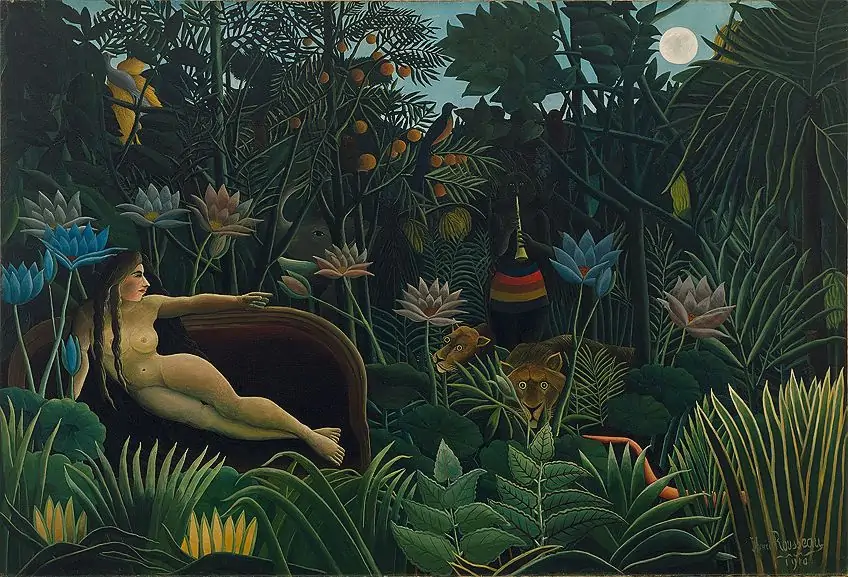
It was displayed at the Salon des Independants where it was met with widespread approval. Typically, his paintings were thought of as rudimentary and highly disliked. So, it is good to hear that he received some affirmation for his talent before his passing.
In modernity, his landscapes are celebrated for their colorful and unique appearance.
Landscape with Two Poplars (1912) by Wassily Kandinsky
| Artist | Wassily Kandinsky (1866 – 1944) |
| Date Painted | 1912 |
| Medium | Oil on canvas |
| Dimensions (cm) | 100 x 79 |
| Where It Is Currently Housed | The Art Institute of Chicago, Chicago, the United States |
| What It Is Worth | Not available |
Wassily Kandinsky was a Russian artist who was born in 1866 and died in 1944. He was known for his obscure art style, which was highly influential in the creation of the Abstract art movement. Kandinsky stated that each color produced a specific musical note in his head, likely as a result of a neurological condition called synesthesia in which the senses converge.
For this reason, his paintings often had a unique sentimentality. He was also known to write music to accompany his artworks for exhibitions.
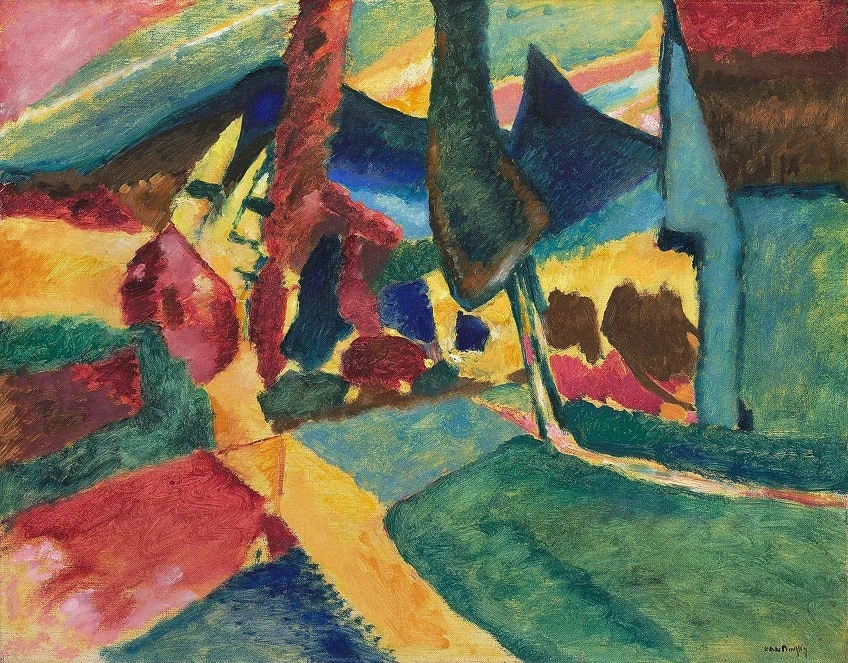
Landscape with Two Poplars (1912) was inspired by the German town of Murnau at the foot of the Alps. It displays Kandinsky’s signature abstraction and disregard for the rule of reality. The distorted landscape makes it hard to distinguish what one is seeing.
Although a bit confusing, Landscape with Two Poplars still manages to be expressive and endearing.
Agrigente (1954) by Nicolas de Staël
| Artist | Nicolas de Staël (1914 – 1955) |
| Date Painted | 1954 |
| Medium | Oil on canvas |
| Dimensions (cm) | 73 x 54 |
| Where It Is Currently Housed | Musée de Grenoble, Grenoble, France |
| What It Is Worth | Estimated $200 000 to $300 000 |
Nicolas de Staël was born in St Petersburg, Russia in 1914. At the outbreak of the Russian Revolution, his family fled to Poland. Whilst in Poland, both of his parents died of unknown causes. The orphaned De Staël was sent to live with acquaintances in Belgium. As a young adult, he studied art in France before traveling extensively painting the landscapes of each foreign land. In the 1950s, there was a high demand for his artworks internationally. Trying to keep up with this demand, De Staël pushed himself to the point of exhaustion. He committed suicide in 1955 at the age of 41.
De Staël’s style was distinctly abstract, as can be seen in Agrigente (1954).
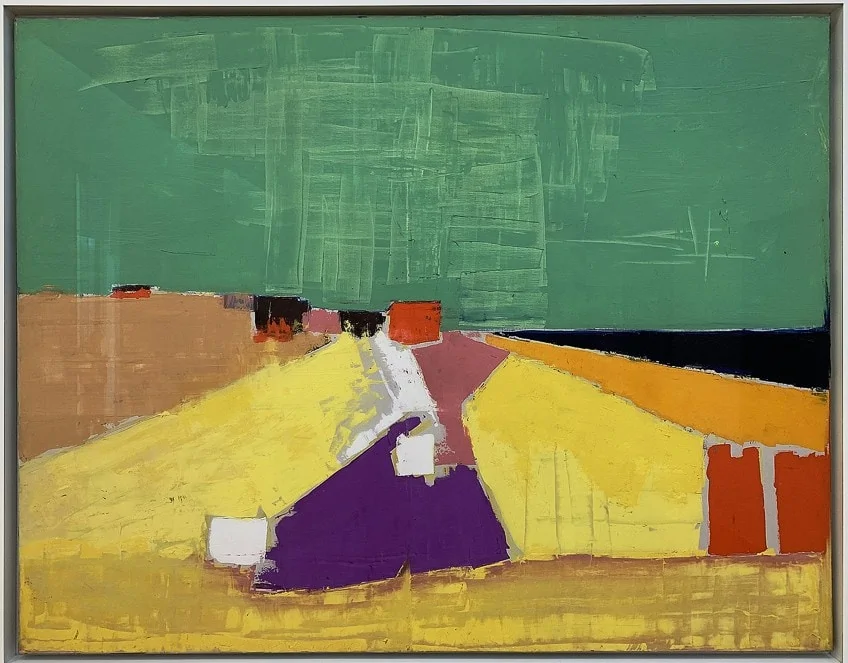
He chose to reject typical laws of color and painted his landscapes in the colors that he felt expressed them the best. Whilst his color palette was abstract, one can see how precise De Staël’s linework was in paintings, such as Agrigente. De Staël’s work is believed to have been one of the inspirations for the Pop Art movement, which was popular in the 1960s.
Once thought of as an inferior art genre, landscape painting has become a prominent feature in art history. A small portion of the most famous landscape paintings was explored in this article. However, there are so many more amazing artworks of this nature to discover. If you are a fan of landscape paintings, we urge you to do some more research of your own.
Take a look at our landscape painting webstory here!
Frequently Asked Questions
What Is Landscape Painting?
Landscape painting is a genre of painting in which artists depict real or fictionalized scenes from nature. Commonly, they are shown from a distance to include several elements such as mountains, rivers, forests, and so on. Landscape paintings may contain animals or human figures although they are not the focal point of the painting.
Who Was the Most Famous Landscape Artist?
There are many famous landscape artists in the history of art, each with their own unique signature characteristics. Some of these artists include Pieter Bruegel the Elder, J. M. W. Turner, and Camille Pissarro. However, the landscapes painted by the Dutch Impressionist Vincent van Gogh are some of the most widely recognized landscape paintings in the modern day.
Why Do Artists Create Landscape Paintings?
There are several reasons that artists may choose to paint landscapes. Some feel a deep connection to that particular piece of land, whilst others are simply amazed by the natural beauty they bear witness to. Whatever their reasoning, many artists have developed a passion for painting landscapes since the practice became popular circa the 17th century.
Jordan Anthony is a Cape Town-based film photographer, curator, and arts writer. She holds a Bachelor of Art in Fine Arts from the University of the Witwatersrand, Johannesburg, where she explored themes like healing, identity, dreams, and intuitive creation in her Contemporary art practice. Jordan has collaborated with various local art institutions, including the KZNSA Gallery in Durban, the Turbine Art Fair, and the Wits Art Museum. Her photography focuses on abstract color manipulations, portraiture, candid shots, and urban landscapes. She’s intrigued by philosophy, memory, and esotericism, drawing inspiration from Surrealism, Fluxus, and ancient civilizations, as well as childhood influences and found objects. Jordan is working for artfilemagazine since 2022 and writes blog posts about art history and photography.
Learn more about Jordan Anthony and about us.
Cite this Article
Jordan, Anthony, “Famous Landscape Paintings and Artists – Top Painted Landscapes.” artfilemagazine – Your Online Art Source. September 6, 2022. URL: https://artfilemagazine.com/famous-landscape-paintings-and-artists/
Anthony, J. (2022, 6 September). Famous Landscape Paintings and Artists – Top Painted Landscapes. artfilemagazine – Your Online Art Source. https://artfilemagazine.com/famous-landscape-paintings-and-artists/
Anthony, Jordan. “Famous Landscape Paintings and Artists – Top Painted Landscapes.” artfilemagazine – Your Online Art Source, September 6, 2022. https://artfilemagazine.com/famous-landscape-paintings-and-artists/.


